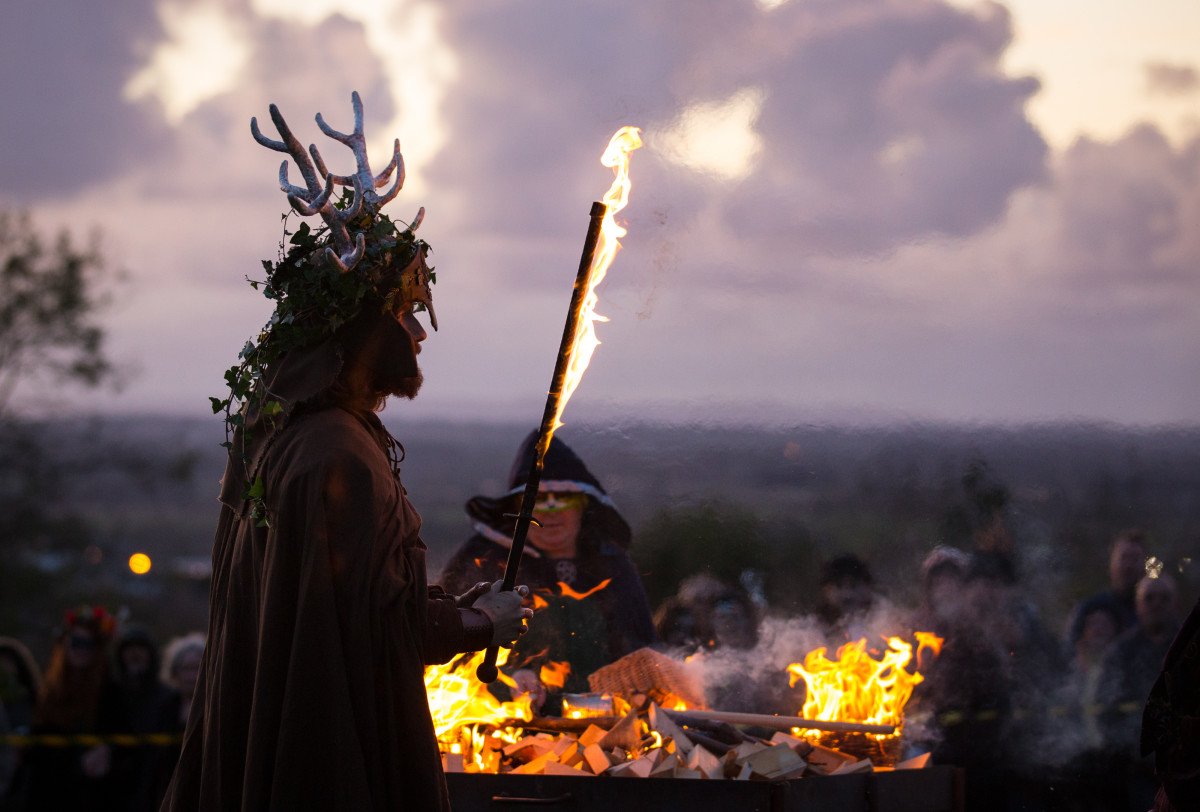Halloween in Ireland: A curated experience.
Inspired by Ireland’s deep-rooted Halloween traditions, we recently curated a private experience for guests to experience the origins of this globally celebrated holiday. The journey took us to Rathcroghan and Oweynagat ("Cave of the Cats"), an ancient site considered the birthplace of Samhain. We explored how Halloween, now celebrated worldwide with costumes and candy, has roots deep in Irish culture and folklore.
Its origins can be traced back over 2,000 years to the ancient Celtic festival of Samhain (pronounced "sow-en"), a sacred night marking the end of the harvest and the beginning of winter. The Celts believed Samhain was a time when the veil between the world of the living and the dead was at its thinnest, allowing spirits to cross over. In ancient Ireland, Oíche Shamhna (Night of Samhain) was the eve when spirits emerged from the Otherworld to roam the Earth, believed to prepare the world for winter’s approach. This concept has evolved into our modern-day Halloween, blending ancient Celtic beliefs with Christian observances.
After visiting Rathcroghan, the tour featured a lunch at haunted Strokestown House and ended with a private dining experience accompanied by a dramatic reading of Bram Stoker’s Dracula—a thrilling tribute to Dublin’s most famous Gothic author.
The Ancient Celtic Festival of Samhain
Observed on November 1, Samhain marked the shift from the lighter half of the year to the darker, colder season. The Celts saw it as a night of heightened supernatural activity, when the boundary between realms was nearly nonexistent. To protect themselves from wandering spirits, they would light large bonfires, don disguises to avoid recognition, and make offerings of food and drink to appease the spirits and avoid mischief.
This festival gave rise to many Halloween traditions we know today, such as wearing costumes, lighting fires, and sharing treats. Samhain was also a time for divination, with Druids engaging in rituals to foretell the future for the coming year. These ancient practices laid the foundation for Halloween’s focus on the supernatural and mysterious.
Samhain firelighting and celtic costume
Oíche Shamhna: The Night of the Spirits
The Irish term for Halloween, Oíche Shamhna (Night of Samhain), captures the essence of this transitionary period. On Oíche Shamhna, it was believed that malevolent spirits would emerge from the Otherworld, especially from places like the Cave of Cruachan in Rathcroghan, known as the "Gate to Hell." These spirits, emerging to roam the land, prepared the world for winter, embodying the fear and reverence the Celts held for this time of year. In later Christian tradition, this night transformed into All Saints' Eve, or Halloween, blending ancient Celtic beliefs with Christian observances.
Irish Folklore and Halloween Traditions
Many customs associated with Halloween come from Irish folklore. The Jack-o'-lantern tradition, for instance, has roots in the story of Stingy Jack, a trickster who trapped the devil and was ultimately doomed to wander the Earth with only a carved-out turnip to light his way. When Irish immigrants brought these traditions to North America, they found pumpkins more suitable for carving, giving rise to the modern Jack-o'-lantern.
Modern day pumpkin carving or Jack-o’-lantern.
Bram Stoker and Halloween’s Gothic Influence
Ireland’s connection to Halloween also intersects with the Gothic horror genre, thanks to Bram Stoker, the Dublin-born author of Dracula. Published in 1897, Dracula introduced the world to one of its most iconic monsters, drawing on vampire myths that were already present in European folklore. Stoker’s story captured the eerie themes of death and transformation, echoing Samhain’s themes of otherworldly activity and supernatural transitions. His influence has left a lasting mark on Halloween culture, making vampires a popular fixture of Halloween costumes and decorations.
Modern Halloween in Ireland
Today, Halloween in Ireland is celebrated with a blend of ancient and contemporary customs. Events like the Púca Festival in County Meath and County Louth revive the spirit of Samhain through music, fire displays, and storytelling, merging age-old traditions with modern Halloween festivities. Such celebrations are a nod to Ireland’s past while embracing the excitement and theatrics of Halloween as it’s celebrated today.
The Halloween we know today is a blend of Irish folklore, Samhain rituals, and Gothic influences from figures like Bram Stoker. It’s an evolving tradition that, while celebrated worldwide, remains deeply tied to Ireland’s history, culture, and the ancient Celtic spirit of Oíche Shamhna.
Interested in a curated, themed experience that taps into your interests and the heart of Irish culture? Why not reach out and understand how we might be able to help - hello@spudxp.com.


